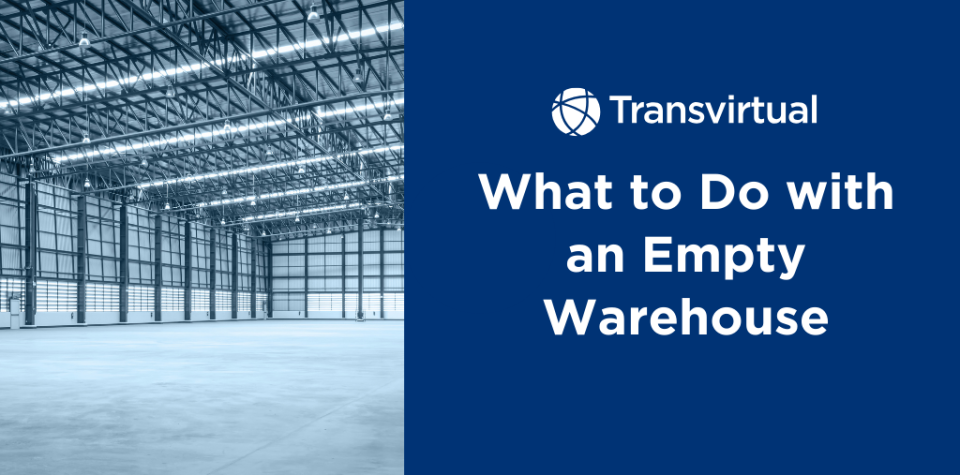Table of Contents
Canada’s warehousing market is predicted to grow and reach a revenue of $92.2 billion by 2030. That’s good news, and right now there’s little worry about warehouses sitting empty. But if the last few years have taught us anything, it’s that supply chains can shift quickly.
Preparing for different scenarios, including underused space, keeps operators agile and resilient. Smart businesses are already thinking ahead: building flexibility into layouts, adopting smarter inventory practices, and exploring ways to make every square meter count. In this article, we’ll look at how operators are coping when warehouses empty, and how to turn challenges into opportunities.
How Operators Are Maximizing and Making Empty Warehouses Profitable
Empty space doesn’t have to mean lost revenue. With the right strategies, operators can turn underused warehouses into flexible, profitable assets that support both short-term needs and long-term growth. Here’s how they’re doing it.
Flexible and scalable storage
One of the smartest ways operators can respond to empty warehouses is by rethinking how space is designed and leased. Instead of sticking with rigid layouts that only work for one type of operation, shift toward modular, scalable designs. This allows you to repurpose sections of a warehouse for different uses without costly overhauls.
Take it from landlords and 3PLs that are offering more flexible lease terms, including smaller spaces and shorter contracts, so businesses can scale up or down as demand changes. In Canada, rent ranges from CAD $10 to $22 per square foot every year.
Alternative revenue streams
When warehouses sit empty, smart operators look for new ways to generate revenue. One approach is co-storage or shared space, where multiple businesses use the same facility to reduce costs and improve efficiency. Others are turning to cross-docking, keeping goods moving without tying up floor space.
Beyond traditional logistics, some operators are leasing to non-traditional users, like retailers running pop-up stores, or e-commerce brands setting up urban micro-fulfillment hubs to speed up delivery. Even last-mile providers are stepping in, using empty warehouses as mini-distribution centers. These creative strategies transform underused space into a valuable, income-generating resource.
Inventory management strategies
Smart operators know that when warehouses are sitting half-empty, it’s the perfect time to sharpen inventory management strategies. Instead of overstocking, many are shifting to “just-in-time” or “just-enough” restocking, ordering only what’s needed to keep supply moving without tying up cash in unused goods.
At the same time, regular inventory clean-ups are helping clear out slow-moving or obsolete stock through markdowns, bundle deals, or promotions. This not only frees up space but also boosts cash flow and reduces carrying costs. Keeping stock lean and active lets operators maintain healthier margins and ensure warehouses remain efficient and responsive to demand.
Tech and Data Analytics
Technology is giving warehouse operators the visibility they need to stay ahead. Predictive analytics and AI-driven forecasting equip businesses to better anticipate demand and avoid costly restocking mistakes. Instead of relying on guesswork, operators gain insights into seasonal trends, customer behavior, and supply fluctuations.
Alongside forecasting, real-time inventory tracking tools are becoming essential. Digital dashboards provide instant updates on stock levels, helping teams spot issues early and make faster decisions. Together, these tools create smarter, data-driven warehouses that use information to stay efficient, resilient, and ready to meet changing customer needs.
Flexible labor and operation strategies
When warehouse volumes dip, operators make their labor and operations strategies more flexible. Cross-training staff ensures workers can handle multiple roles, keeping productivity steady even with smaller teams. Many are also using flexible staffing models, like part-time or temporary workers, to adjust labor costs in line with demand.
At the same time, efficiency gains come from adopting lean practices and cutting out wasted steps in workflows with software solutions like a Warehouse Management System. Tools and insights highlight how streamlined processes reduce overhead while boosting performance. The result is a workforce and operation that stays agile, cost-effective, and ready to scale when demand shifts.
From Empty to Efficient Warehouses
Empty warehouses remain a possibility operators should prepare for. Shifts in demand, consumer behavior, and global supply chains can happen quickly. Those who plan ahead will be best positioned to respond.
The smartest strategies include using data, building flexible layouts, and finding creative ways to make every square meter work harder. You don’t need to change everything overnight. Start small with one or two improvements that boost resilience. With tools like Transvirtual, you can track inventory in real time, streamline workflows, and stay ready for whatever comes next.



